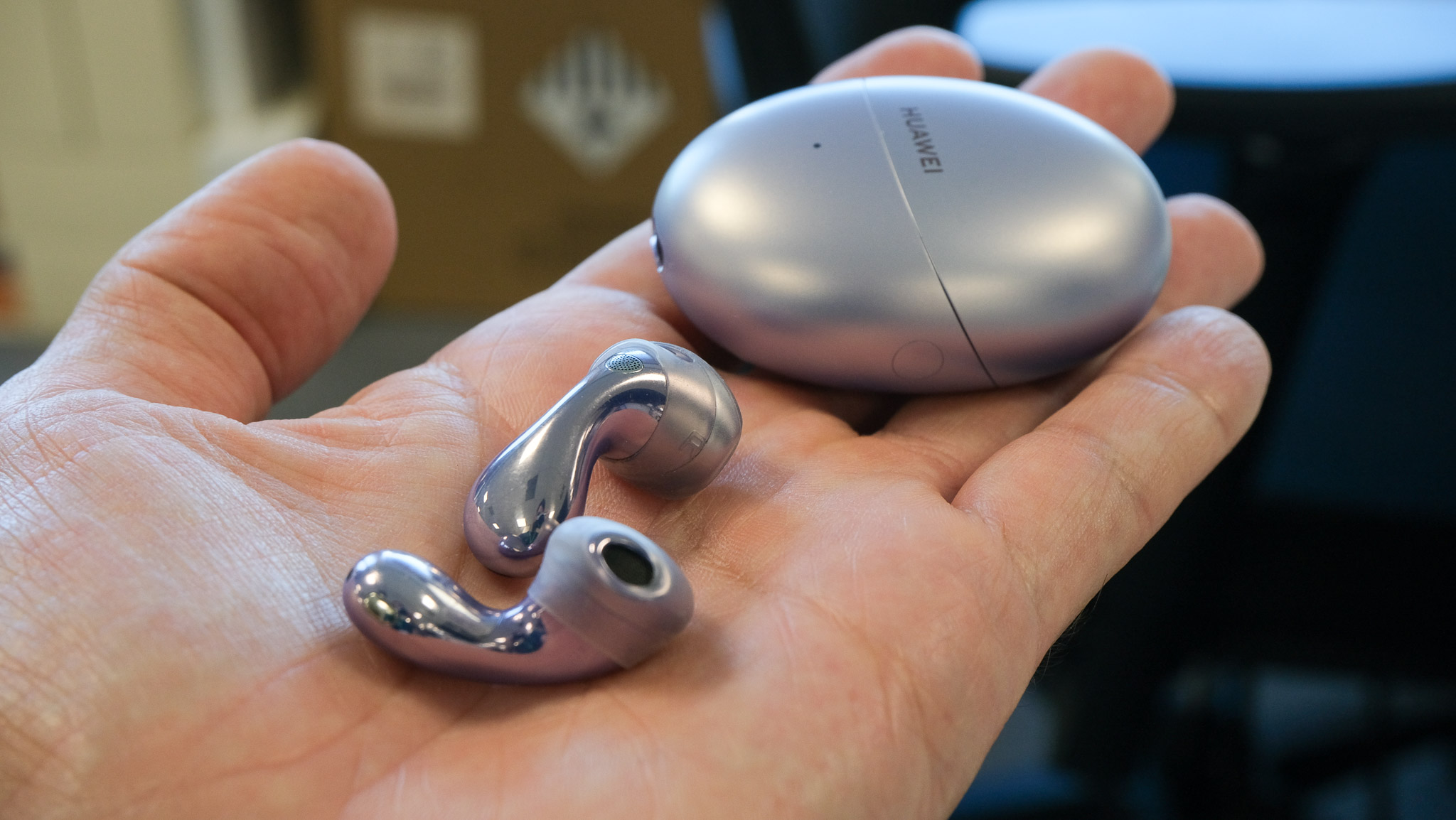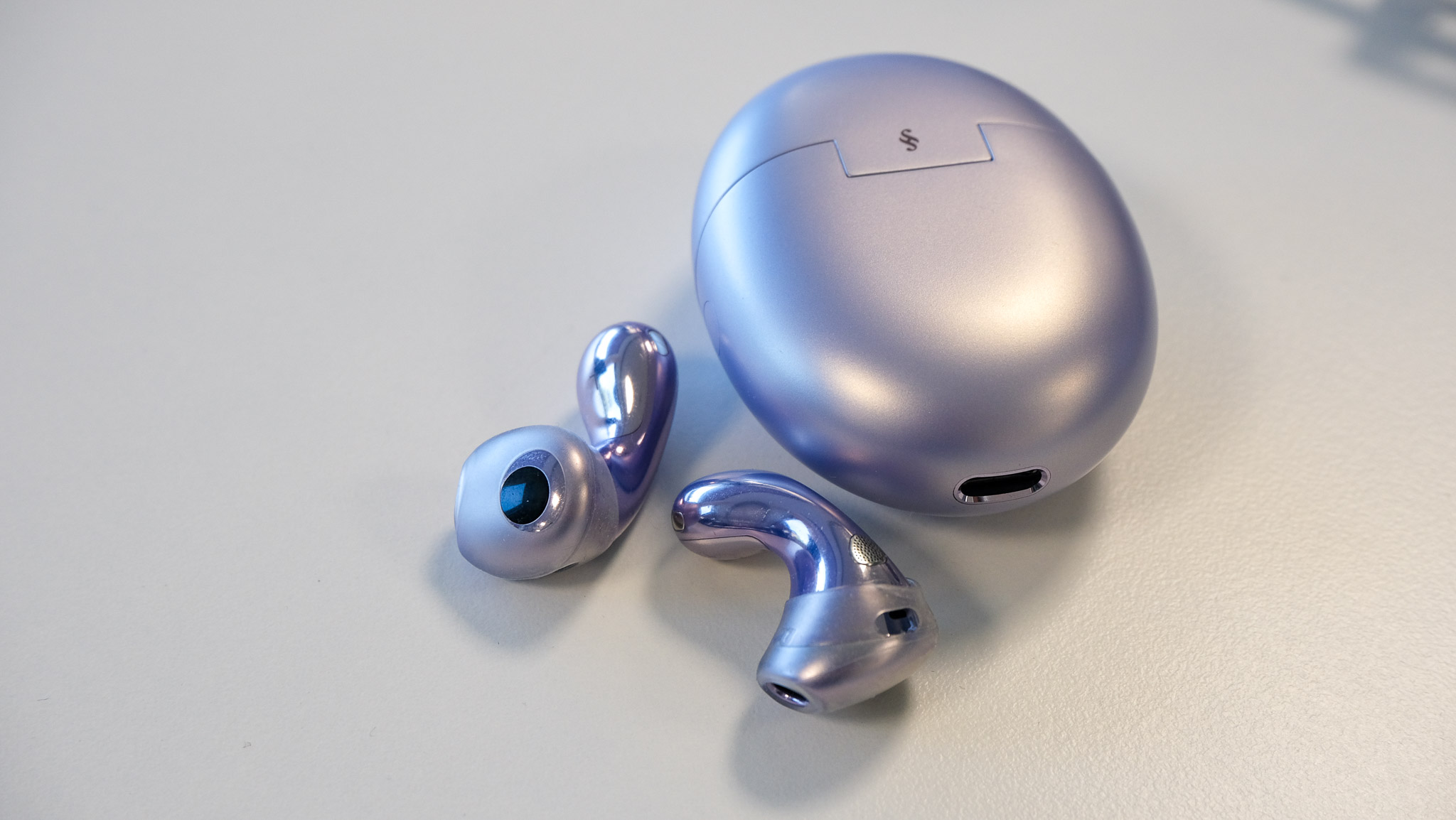
I completely forgot that I reviewed the Huawei Freebuds 5 a couple of years ago, so I was a bit puzzled when the brand reached out about possibly testing its latest noise-cancelling headphones. This turned into excitement as soon as I tried the new buds!
I visited Huawei’s headquarters in Shenzhen, China, last month, where we were briefed about the company’s latest sensing platform launch. At the same time, we were also offered a chance to try the Freebuds 6 and to compare their sound quality with two high-end speakers set up in the briefing room.
To my surprise, both sounded almost identical, which piqued my curiosity. The buds' predecessors performed okay, but I can’t say I was blown away by them. Sound was clear, but the fit was a bit hit-and-miss for me due to the seamless curve design.
ANC was also a weak point. While some open-ear headphones, such as the Apple AirPods 4, can provide some noise cancellation, the Freebuds range leaves the ear canal more exposed, which inevitably lets in more ambient noise.
A serious audio upgrade hiding in a familiar shape
The new buds address almost all of these issues, some better than others.
Sound quality is greatly improved thanks to the dual-driver setup, featuring an 11 mm dynamic bass driver plus a planar diaphragm tweeter. This extends the frequency range from 14 Hz to 48 kHz and provides a richer, more balanced sound.
The drivers are paired with Huawei’s new Bass Turbo 2.0 and triple adaptive EQ tuning, all managed within an open-fit design through a smart three-part internal structure.
The Freebuds 6 are the first open-fit Huawei buds to support 2.3 Mbps lossless streaming via the L2HC 4.0 codec (HWA certified) when used with a compatible EMUI 15+ device (Huawei Audio app on a Samsung/Huawei smartphone), delivering audiophile-grade sound wirelessly.

On the calls and comfort front, the FreeBuds 6 are lighter (9 %) and sleeker (12 %) with shorter stems for extended wear. They feature advanced open-fit ANC with three microphones plus a new Voice Pickup Unit (VPU), capable of reducing noise up to 95 dB and robustly handling wind speeds up to 8 m/s, all thanks to generative AI-driven processing.
Battery life is also improved: 6 hours per bud (when ANC is off), up from 5 hours, and 36 hours total with the case (up from 30 hours). They also offer rapid charging, just 5 minutes for 2.5 hours of playback, along with wireless and USB-C support.
Great sound, weak silence
As I mentioned above, the sound quality of Freebuds 6 has improved dramatically. The headphones sound clearer and louder even without a Samsung or Huawei smartphone in sight (I tested them with my iPhone 16 Pro).
Some of the instrumental songs I conjured up from the bottomless pits of my Spotify playlists came across almost ethereal: smooth, shimmering highs danced above a surprisingly full low-end, with vocals and ambient textures sitting perfectly in the mix.
Sadly, ANC performance is still poor, at best. The Freebuds 6 leave the ear canals quite exposed, which, no matter how sophisticated the algorithm, will let in a lot of ambient sound. I tried to silence the cabin noise on the train on the way to the office to no avail.
Cranking up the volume helps, but it’s not the same as having a powerful enough ANC to quieten the world. It’s like shouting over a crowd instead of asking them to quiet down – it works, but it’s not the real thing.
The shape of the buds is less of a liability this time around. The buds still sport the same curvy form factor, but it’s more refined, meaning the Freebuds 6 sit more comfortably in your ears, even if you move your head around vigorously.
Call quality is yet to be tested, but the three-mic setup gives me confidence that it will perform well. Battery life also seems on point – great news!
Will the Huawei Freebuds 6 push Apple AirPods Pro 2 out of my ears? Maybe not, but it’s possible it’ll be a great alternative for office use. Full review coming soon.







